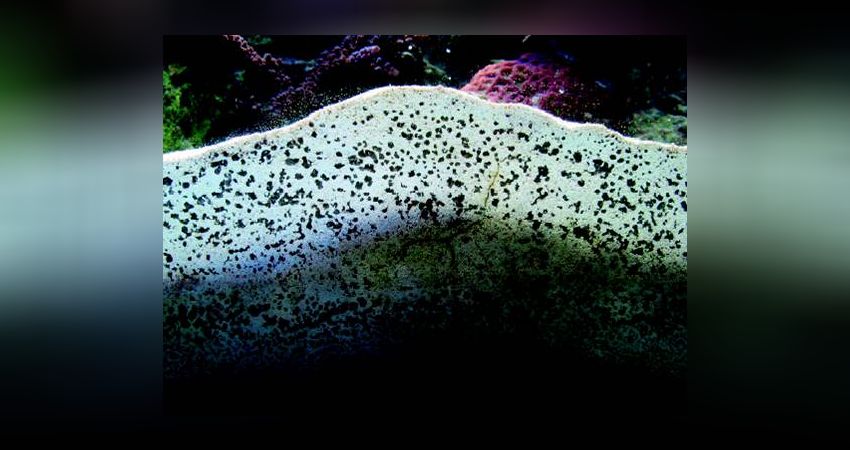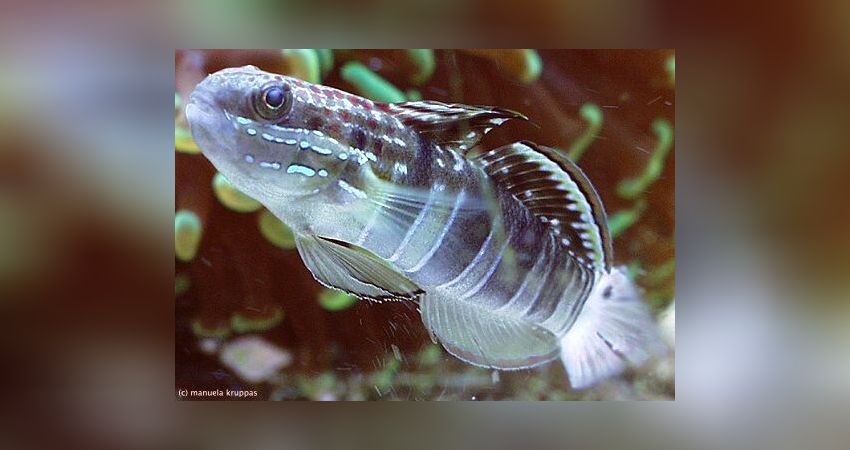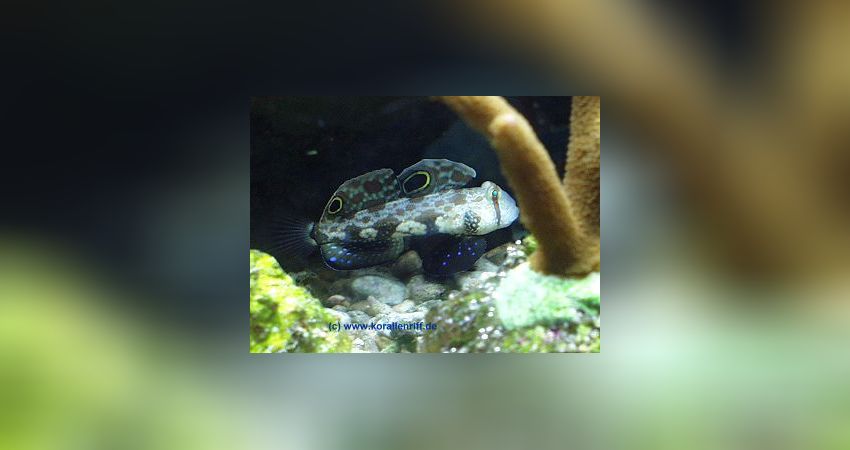14 - Part 1 Filter systems - DSB

filter systems are described. We start with the Deep Sand Bed, DSB for short: How does this system, known from the USA, work?
D(eep) S(and) B(ed) - or Deep Sand Bed
The DSB system according to Dr. Ron Shimek has been widely known in the USA for years, and this wave is slowly spilling over into Europe. Certainly there were quite a few people here in Germany who had already thought about it, especially after publications in specialist journals or presentations at marine water symposia. In the USA, the DSB system is now one of the most widespread systems of all.
In principle, it is about a high substrate whose height should be at least 8, but more likely 10 or even 20 cm. The substrate used must be very fine, the term sand rather hits the nail on the head. The grain size distribution is between approx. 0.06 mm and 2 mm at the most. According to Shimek, the mean value should be between 0.125 mm and 0.250 mm. However, aquarists in the USA and other countries have used slightly different grain size compositions and achieved good results. However, it is important that the material is really fine, the classic „aquarium gravel“ is not suitable!

Überhaupt has changed a lot in recent years when it comes to substrate. A brief excursion into the types of substrate currently in use is permitted at this point.
It all started in the middle of 2003, when a German importer brought the so-called „Live Sand“ to Germany. Until then, most aquarists, including the authors, had used rather large types of substrate.
In 2004, various fine types of substrate were added, such as DSB sand. In the course of this year, the so-called „real“ Live Sand was added, which costs about 11 euros per kilo. According to the distributor, this sand is extracted from the sea and shipped to us, it is supposed to arrive fresh. The sand contains the microorganisms that are important for DSB systems and that colonise the sand. In addition, there are other fine types of substrate such as Indo Pacific sand, etc. The trade now offers quite a good selection.
The distributor offers so-called Detrivore Kits for the DSB system in order to supply the system more quickly with various organisms. Shimek advises to add one of the Detrivore Kits every two years in order to increase the number and variety of animals.
Dr. Jens Kallmeyer already reported in this context in 2002 at the Fisch & Reptil trade fair in the section Fachsymposium Meerwasser about the effect of high and less high substrate. He explained that a low substrate is less effective than a high substrate or can even cause the opposite and under certain circumstances even produce nitrate. Jens Kallmeyer showed with very good moving pictures how strong the water flow can be within a coarse substrate, and that no nitrate degradation can take place here, as oxygen-free areas are not formed. These are necessary for nitrate degradation to take place. It should be noted that Jens Kallmeyer runs his aquarium system of approx. 1000 litres with approx. 100 kilos of substrate, which is, however, mixed with fine and coarse material and does not adhere to the specification of the fine substrate of Shimek.
Sand consists, depending on the place of origin, of a variety of minerals. Although coral islands are often of volcanic origin, it is very rare to find sands in the reefs that do not consist of limestone. At river mouths, on the other hand, we tend to find siliceous sand, which we commonly refer to as quartz sand. The mineralogical composition of the sand plays only a minor role here. Apart from a few exceptions (e.g. sands containing ores), only the grain size is important. The finer the sand, the better the DSB works. However, there are certain limits here as well, a DSB sand should not be below a certain grain size, because then there is only a more or less solid plate in the tank that cannot perform any biological function.
If the pores between the grains become too small and no longer provide space for the organisms, then the substrate will not be colonised.
The organisms that live between the sand grains make a considerable contribution to the functioning of the DSB. These organisms only survive in the long term in sand that corresponds to their size. If you have larger sand, other organisms will settle. In summary, the grain size or grain composition of the sand determines the type and diversity of life on and in the sand. Furthermore, the conglomerate size also determines how fast or slow water can flow through it, which in turn has a great influence on the organisms living in it.
Now let's look at how the Deep Sand Bed works.
Because the flow in the sediment slows down with depth, the Deep Sand Bed can be divided into different layers, the oxic, suboxic and anoxic zones. In the oxic layer, as we know from the nitrification process, oxygen is freely available, just like in the aquarium. In the suboxic area, on the other hand, there is hardly any oxygen left, even if there is still a little. In the anoxic zone, on the other hand, no more oxygen is found.
Many different organisms live in the DSB. In the context of the functioning of the DSB system, the animals of the upper sediment zone play a special role. These are worms, snails and arthropods. Dr. Shimek specifically points out that they should be very species-rich in order to perform many different functions in the sediment. These animals take up food remains, as well as faeces and other detritus, and convert them into soluble substances, which can then be further processed by the bacteria until they finally escape from the tank as gas.
The upper layers of the sediment are supplied with oxygen by flow (so-called advective flow) and by diffusion. In the oxic layer, the organisms consume the oxygen available there through their metabolism. As Shimek further explains, the oxygen is consumed very quickly so that the sub- and anoxic layers are formed. The sub-oxic and anoxic layers of the DSB system are home to anaerobic bacteria that break down nitrate, among other things. Depending on the availability of nutrients, narrow zones with different groups of microorganisms appear in the DSB, each group preferring different nutrients.
You have to think of it somewhat like this:
Starting at the surface of the sandy bottom where rest-feeding animals such as bristle worms or snails eat superfluous food, they excrete many yellow nutrients. Many of the animals disappear into the safety of the substrate where they will then digest the food. The subsequent excretion logically takes place exactly where the animal is at the moment, i.e. deeper in the sand. Other organisms live on this, so it is a continuous cycle where one animal supplies the other.
Conclusion:
To make a sand bed work, you need fine sand in the right granulation of 0.125 – 1 mm, about 10 cm high or higher, filled with many living organisms. The rest, as you will have noticed yourself when reading, will work automatically over time, as the population density of the organisms will depend a little on you, your wallet and your fish stocking. With regard to the DSB system, the Marine Detrivore Kits discussed above will certainly become important in the near future with regard to many different organisms. The more different organisms live in the sand the better it is for the whole aquarium system.
One thing should be kept in mind: A DSB should never be stirred up, as many aquarists with a larger substrate regularly do to remove detritus. The resulting disturbance of these small &oum;cosystems can have serious consequences and possibly lead to large losses.


"Sand-chewing" gobies yes or no?
Ron Shimek and Jens Kallmeyer hold opposing views here
Ron Shimek argues that sand-eating animals should be avoided as far as possible. In his opinion, the often widespread gobies in particular are rather counterproductive. By chewing sand, they eat exactly the animals we are trying to reproduce in the sand bed. Jens Kallmeyer, however, has the exact opposite opinion on this subject, he expressly recommends keeping gobies etc. in DSB tanks. The vast majority of gobies only work through the top 1 – 2 cm of the sediment, rarely deep holes are dug or the entire substrate is dug up within a short time. The fact that the gobies scoop out many detritus particles from the sand prevents larger accumulations of detritus. If this does not happen, the accumulation of decomposing (i.e. rotting) material can be so extreme that the anoxic zone reaches the surface and toxic substances are released into the aquarium. Although some animals are eaten as a result of the gobies chewing sand, J. Kallmeyer believes that this disadvantage is offset by the benefit of a much lower input of detritus into the sediment.
In principle, it is a cycle of eating and being eaten that makes the system work. Nothing is more representative of life in a marine aquarium than life in the sand, a life that we do not see, but which contributes in a really big way to making a marine aquarium even more natural.
But there is one thing that we do not want to and must not leave unmentioned, as it is especially important for aquarists who want to make such a system. Several DSB systems that are run 100% according to Ron Shimek's instructions are collapsing. You can find a lot of information about this in American discussion forums. The appearance is usually always the same: Plain black spots on the bottom, sulphide gets into the aquarium water and then the fish die. It is therefore very important to leave the bottom alone and not to touch it or even move it. Presumably for this reason Shimek now also recommends an additional shearer !
This DSB report is certainly not an easy article to read and is largely based on Dr. Shimek's model. However, the authors have really only limited themselves to the most necessary information about this system.
Equally, Jens Kallmeyer, who has been dealing with the system extensively for years, has contributed a great deal to the knowledge provided here about the functioning of the DSB. The two authors congratulate Ron Shimek as well as Jens Kallmeyer for their special efforts to bring this system closer to the aquarist. After all, Germany (as well as the rest of Europe) is still a country where a low substrate is prevalent.
We hope that this article will help some committed aquarists to become more involved with these or other near-natural systems.
Frank Diehl, Robert Baur-Kruppas
How do you like this article?
Info
Author

Bookmark
Comments
Topics
Similar articles
- 18 - Ozone
- How to create a marine aquarium-Part 12: Installing the carbon/adsorber filter
- The nano reef: set-up and basics
- 37 - Pests Part 2
- How a marine aquarium is created Part 48-49: The new Maxspect Jump LEDs L165. 2 videos available
- 29 - Surgeonfishes Part 1
- How a marine aquarium is created Part 32: The aquarium on holiday
- How a marine aquarium is created Part 26: Goodbye glass lice?
- 25 - Small polyp stony corals
- How a marine aquarium is created Part 39: Montipora snails Phestilla sp.
Comments To the top
Please register
In order to be able to write something yourself, you must register in advance.






